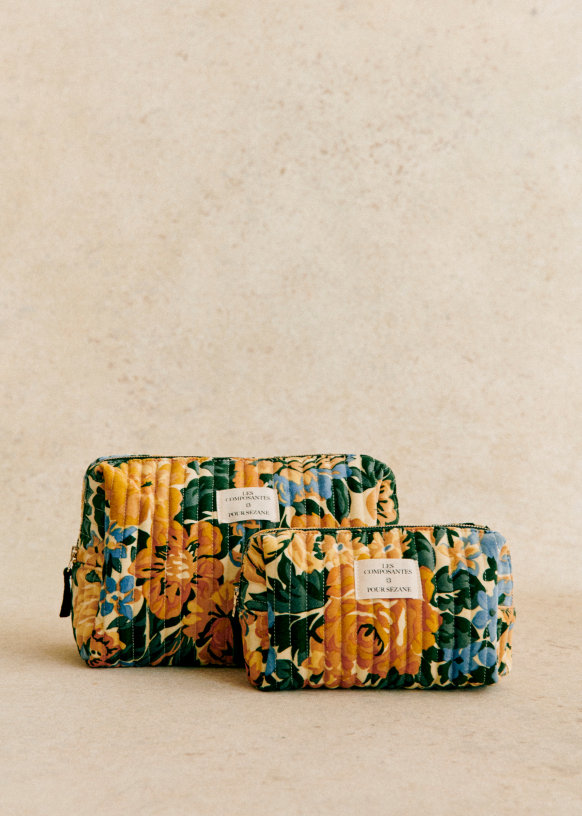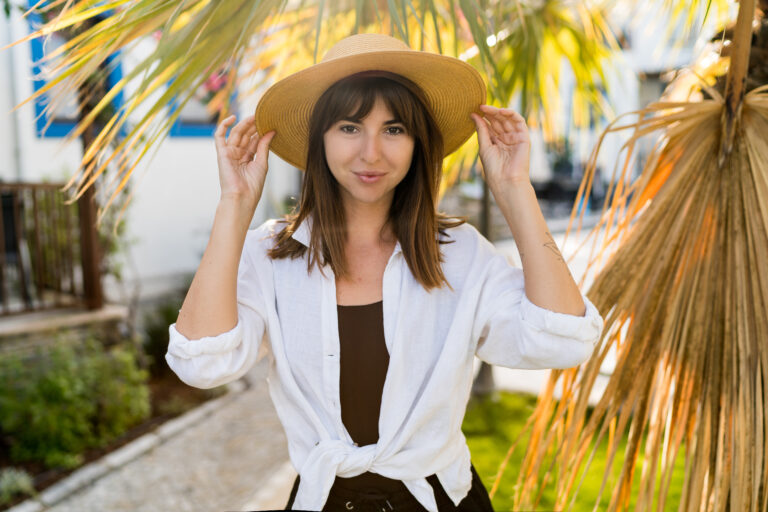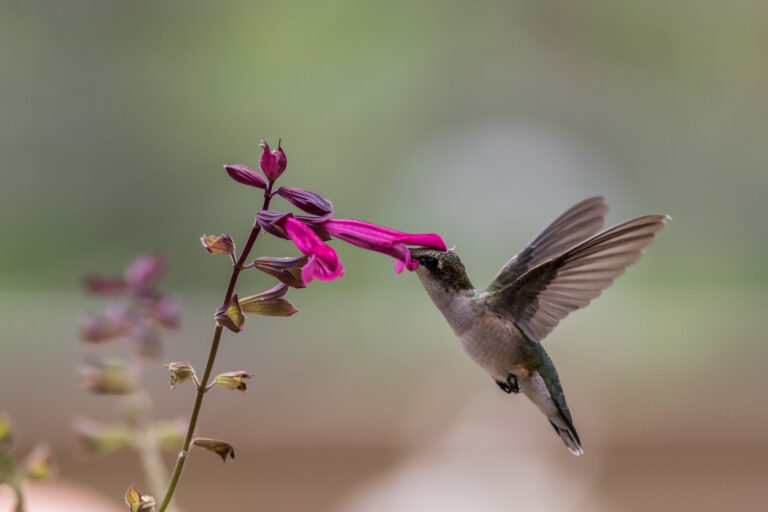What Makes Up a Garden? Essentials for Lush Greenery
A garden is more than just a piece of land. It is a living space filled with plants, flowers, and many other elements.
Understanding what makes up a garden can enhance your appreciation for this vibrant environment. A garden can be a place of beauty, relaxation, and even productivity. It combines different components, such as soil, plants, and design, to create a harmonious space.
Each element plays a role in how a garden looks and feels. Whether you enjoy growing vegetables, tending to flowers, or simply relaxing outdoors, knowing the parts of a garden can help you create your own paradise. Explore the essential components that come together to form a beautiful garden.
:strip_icc()/stone-walkway-leading-garden-ccab4820-64cc37892feb45a58001bc53f6ba7aeb.jpg)
Credit: www.bhg.com
The Essence Of Garden Spaces
Gardens are more than just patches of land. They are places that hold beauty and peace. A garden invites us to explore nature. It offers a retreat from busy life. Each garden tells a unique story. The plants, flowers, and layout create a special feeling.
Capturing Nature’s Beauty
In every garden, nature shines brightly. The colors and scents bring joy. Here are some key elements that capture this beauty:
- Flowers: Bright blooms attract butterflies and bees.
- Trees: Provide shade and shelter for wildlife.
- Paths: Guide visitors through the garden.
- Water features: Add tranquility with soothing sounds.
Each of these elements plays a role. They create a vibrant scene. Gardens can change with the seasons. Spring brings blossoms. Summer offers lush greens. Autumn shows warm colors. Winter offers a quiet, peaceful landscape.
Personal Refuge And Harmony
A garden is a personal escape. It allows for relaxation and reflection. Spending time in a garden can bring peace. Here are some ways a garden fosters harmony:
- Quiet spaces: Ideal for meditation and reading.
- Seating areas: Perfect for family gatherings.
- Nature sounds: Birds and wind create a calming atmosphere.
Gardens can also connect us with others. They are places to share moments. Friends and family can enjoy time together. A well-designed garden creates balance. It brings together nature and human touch.
Starting With Soil
Soil is the heart of every garden. It supports plants and helps them grow. Healthy soil provides essential nutrients. The right soil makes a big difference in how well plants thrive.
The Foundation Of Growth
Soil acts as a foundation for all garden life. It holds water and air. These elements are crucial for root development. Without good soil, plants struggle to survive.
Different plants need different types of soil. Some thrive in sandy soil, while others prefer clay. Knowing your soil type helps you choose the right plants.
Nutrient-rich Blends
Nutrient-rich soil is vital for plant health. It contains minerals like nitrogen, phosphorus, and potassium. These elements support growth and flowering.
Compost is a great way to enrich your soil. It adds organic matter and improves soil structure. Mix compost with existing soil for best results.
Regular testing of soil can guide your gardening efforts. Tests reveal pH levels and nutrient content. Adjusting these can lead to healthier plants and better yields.
Plant Selection
Plant selection is a key part of any garden. The right plants bring beauty and life. They can also attract wildlife and improve air quality. Choosing plants requires knowledge and thought.
Choosing The Right Flora
Selecting the right flora is essential. Consider the climate, soil type, and sunlight. Think about how much space you have. Here are some tips:
- Choose plants that thrive in your area.
- Consider the size and growth habits of plants.
- Think about colors and textures.
Popular choices include:
| Type of Plant | Best For |
|---|---|
| Perennials | Long-lasting blooms |
| Annuals | Bright, seasonal color |
| Shrubs | Structure and privacy |
Local Versus Exotic Varieties
Choosing between local and exotic plants can be tricky. Local varieties are adapted to your climate. They often require less care.
Exotic plants can add unique beauty. They may need special conditions to grow.
Consider these points:
- Local plants support local wildlife.
- Exotic plants can create a standout look.
- Local plants often need less water.
Make your choice based on your garden goals. Both options have their benefits. Enjoy the process of selecting your plants.
Watering Wisdom
Watering is key to a healthy garden. Plants need water to grow strong. Understanding how to water properly helps them thrive. Different techniques and tips can make a big difference.
Irrigation Techniques
Irrigation techniques vary based on garden size and plant needs. Drip irrigation delivers water directly to the roots. This saves water and reduces weed growth.
Soaker hoses are another great option. They slowly release water into the soil. This method helps keep the moisture consistent.
Sprinklers are common for larger gardens. They cover wide areas. Timing is important. Water in the early morning or late evening to avoid evaporation.
Conservation Tips
Water conservation is crucial in gardening. Collect rainwater in barrels. This natural source is free and effective.
Mulching helps retain soil moisture. It prevents water loss from evaporation.
Choose drought-resistant plants. These require less water. They can still thrive in dry conditions.
Monitor your garden’s moisture levels. Use a moisture meter for accuracy. Water only when necessary to keep plants healthy.
Sunlight And Shade
Sunlight and shade are vital for any garden. They affect plant growth and health. Different plants need different amounts of light. Understanding how to balance these elements is key to a thriving garden.
Balancing Light Exposure
Finding the right amount of light for your plants matters. Some plants love sunlight. Others thrive in shade. Here are steps to balance light:
- Observe your garden daily.
- Note where sunlight hits.
- Identify shaded areas.
- Choose plants based on light needs.
Consider this table for light preferences:
| Plant Type | Light Preference |
|---|---|
| Succulents | Full Sun |
| Ferns | Partial Shade |
| Vegetables | Full Sun |
| Hostas | Full Shade |
Protecting Plants From Extremes
Plants can suffer from too much sun or too much shade. Here are ways to protect them:
- Use shade cloths during hot days.
- Plant trees or shrubs for natural shade.
- Move potted plants based on the season.
- Mulch around plants to retain moisture.
Monitor your garden regularly. Adjust light exposure as seasons change. Healthy plants lead to a beautiful garden.

Credit: www.youtube.com
Fertilizers And Supplements
Fertilizers and supplements play a crucial role in garden health. They provide essential nutrients to plants. This boosts growth and improves vitality. Understanding these products helps gardeners choose wisely.
Boosting Plant Health
Healthy plants need the right nutrients. Fertilizers supply these nutrients. They can enhance soil quality and increase yield.
- Nitrogen: Promotes leaf growth.
- Phosphorus: Supports root development.
- Potassium: Increases disease resistance.
Using the right fertilizers can lead to:
- Stronger plants.
- Bigger flowers and fruits.
- Faster growth rates.
Organic Options
Organic fertilizers offer a natural choice. They improve soil health without harmful chemicals. Common organic options include:
| Organic Fertilizer | Benefit |
|---|---|
| Compost | Enhances soil structure and fertility. |
| Manure | Provides rich nutrients and improves soil texture. |
| Bone Meal | Boosts phosphorus for root growth. |
Using organic options supports sustainable gardening. They help maintain a healthy ecosystem. Choose fertilizers based on your plants’ needs.
Garden Layout And Design
A well-planned garden layout makes a big difference. It shapes how plants and paths connect. Good design creates flow and harmony. It helps gardeners enjoy their space. Let’s explore key elements of garden layout and design.
Structural Planning
Structural planning is the backbone of any garden. It involves deciding where everything goes. Start with paths and borders. Paths guide visitors through the garden. Borders define spaces and add structure.
Consider the size and shape of your garden. Use these factors to plan areas for planting. Think about sunlight and shade. Different plants need different amounts of light. Place taller plants at the back and shorter ones in front. This allows everyone to see each plant.
Aesthetic Considerations
Aesthetic considerations enhance the beauty of a garden. Colors, textures, and shapes create a pleasing view. Choose plants with different colors to add interest. Mix flowering plants with greenery for contrast.
Think about seasonal changes. Some plants bloom in spring, while others shine in fall. A garden with varied seasons keeps it fresh. Use decorative items like stones or garden art. These elements add personality to the space.
Creating a balanced design is important. Symmetry can bring harmony, while asymmetry adds surprise. Experiment with different layouts to find what works best for you.

Credit: www.sezane.com
Pest Control Strategies
Pest control is vital for a healthy garden. Pests can harm plants and reduce yields. Effective pest control keeps your garden thriving. Here are two popular strategies.
Natural Predators
Natural predators are allies in pest control. They help keep pest numbers down. Ladybugs eat aphids, while birds catch caterpillars. You can attract these helpful creatures.
Plant flowers to invite beneficial insects. Marigolds and daisies work well. Avoid using harmful chemicals. This keeps natural predators safe.
Chemical-free Repellents
Chemical-free repellents protect plants without harming the environment. Many simple ingredients are effective. For example, soap sprays can deter aphids. Garlic and pepper sprays also work against various pests.
These sprays are easy to make at home. Mix water with the ingredients and spray on plants. Reapply regularly for the best results. This method is safe for your garden and the planet.
Seasonal Care
Seasonal care is vital for a thriving garden. It helps plants adapt to changing weather. Each season brings different tasks. These tasks ensure your garden stays healthy and beautiful.
Understanding seasonal care makes gardening easier. You can prepare for the needs of your plants. This knowledge leads to better growth and blooms.
Preparing For Changes
Preparing for changes in the seasons is essential. Spring brings new life. It’s time to plant seeds and nurture seedlings. Remove debris and weeds to give plants space.
Summer requires watering and mulching. Protect plants from harsh sun and pests. In fall, it’s time to harvest. Clean up fallen leaves and prepare for winter.
Winter care focuses on protection. Cover delicate plants with mulch or cloth. Check for frost damage. This preparation helps ensure a healthy garden in spring.
Year-round Maintenance
Year-round maintenance keeps your garden in shape. Regular watering is key. Adjust your watering schedule with the seasons. Too much or too little water can harm plants.
Fertilizing helps plants get necessary nutrients. Test your soil to know what it needs. Pruning is vital for plant health. Remove dead or overgrown branches.
Monitor for pests and diseases. Early detection prevents larger problems. Keeping a garden journal can track seasonal changes. This practice helps improve your gardening skills over time.
Tools Of The Trade
Every gardener needs the right tools. The right tools make gardening easier and more enjoyable. They help you plant, trim, and maintain your garden effectively. Here, we will explore essential equipment and innovative gadgets that every gardener should consider.
Essential Equipment
Some tools are must-haves for every gardener. Here is a list of essential gardening tools:
- Hand Trowel: Perfect for digging small holes and transplanting.
- Pruning Shears: Great for trimming plants and cutting branches.
- Garden Fork: Useful for turning soil and breaking up clumps.
- Rake: Helps level soil and gather leaves.
- Watering Can: Essential for watering plants without overdoing it.
- Gloves: Protect your hands from dirt and sharp objects.
| Tool | Use |
|---|---|
| Hand Trowel | Digging and transplanting |
| Pruning Shears | Trimming and cutting |
| Garden Fork | Turning soil |
| Rake | Leveling soil |
| Watering Can | Watering plants |
| Gloves | Hand protection |
Innovative Gadgets
Gardening gadgets can make tasks easier. Here are some innovative tools that can help:
- Soil Moisture Meter: Measures soil moisture to prevent overwatering.
- Garden Kneeler: Provides comfort while working on the ground.
- Electric Tiller: Breaks up soil quickly and effortlessly.
- Plant Labels: Helps identify plants easily.
- Self-Watering Planters: Reduces the need for daily watering.
These gadgets can save time and effort. They make gardening more enjoyable. Investing in the right tools can lead to a thriving garden.
Community And Urban Gardening
Community and urban gardening bring people together. These gardens thrive in cities. They create green spaces in busy areas. Many people join forces to grow plants. This teamwork builds friendships. It also fosters a sense of belonging.
Urban gardening helps improve neighborhoods. It adds beauty to concrete jungles. Residents can enjoy fresh food. Gardening in the community promotes healthy living. It encourages people to connect with nature.
Shared Green Spaces
Shared green spaces benefit everyone. They offer places to relax and enjoy. People can gather to plant flowers and vegetables. These gardens often use empty lots or parks. They transform dull areas into vibrant spots.
Community gardens also teach skills. People learn how to grow food. They share knowledge and tips. Children gain hands-on experience. They see where food comes from. This helps them appreciate nature and nutrition.
Gardening In Limited Areas
Urban gardening often happens in small spaces. Balconies and rooftops become gardens. Containers and vertical gardens make it possible. These methods maximize limited areas.
Even with small spaces, creativity shines. Gardeners use recycled materials. They create stunning displays. Every inch counts. Small gardens can still produce food and flowers.
Community support is key. Neighbors share resources and ideas. They make the most of their limited spaces. Together, they cultivate beauty and sustainability.
The Joy Of Harvest
The joy of harvest is a special time for every gardener. It is the moment when hard work pays off. Seeing plants grow and produce food brings happiness. The colors and flavors of fresh produce excite the senses. Harvesting is not just about picking fruits and vegetables. It is about celebrating nature’s gifts.
Reaping The Rewards
Harvesting offers many rewards. Here are some key benefits:
- Freshness: Homegrown food tastes better.
- Nutritional Value: Fresh produce retains more nutrients.
- Cost Savings: Growing your own food can save money.
- Connection to Nature: Harvesting connects you with the earth.
Different crops have different harvest times. Here is a simple table of common vegetables and their harvest times:
| Vegetable | Harvest Time (Weeks) |
|---|---|
| Tomatoes | 8-10 |
| Carrots | 10-12 |
| Peppers | 10-12 |
| Lettuce | 6-8 |
Sustainable Practices
Using sustainable practices enhances the joy of harvest. Here are a few ways to make your garden eco-friendly:
- Composting: Turn kitchen scraps into rich soil.
- Crop Rotation: Change planting areas each year.
- Natural Pest Control: Use beneficial insects.
- Water Conservation: Use rain barrels for watering.
Sustainable gardening protects the environment. It ensures the garden remains healthy. This leads to more abundant harvests in the future. Enjoy the process. Celebrate the fruits of your labor.
Frequently Asked Questions
What Are The Main Components Of A Garden?
A garden typically consists of soil, plants, water, and tools. Soil provides nutrients for plants to grow. Plants can include flowers, vegetables, and shrubs. Water is essential for plant health. Additionally, tools like shovels and rakes aid in garden maintenance.
These components work together to create a thriving garden.
How Do I Design A Garden Layout?
To design a garden layout, start by assessing your space. Consider sunlight, shade, and soil quality. Sketch your ideas on paper or use garden design software. Choose plants based on their height, color, and growth habits. Organize them for visual appeal and accessibility.
This planning ensures a successful garden design.
What Plants Are Best For Beginner Gardeners?
Beginner gardeners should consider easy-to-grow plants. Herbs like basil and mint thrive in various conditions. Marigolds and zinnias add vibrant colors and are low-maintenance. Tomatoes and radishes are also suitable for beginners. These plants are forgiving and can help build gardening confidence over time.
How Do I Maintain My Garden?
Maintaining a garden involves regular watering, weeding, and pruning. Water plants consistently, especially during dry spells. Remove weeds to prevent competition for nutrients. Prune dead or overgrown branches to encourage healthy growth. Regular maintenance ensures your garden remains healthy and vibrant throughout the growing season.
Conclusion
A garden is more than just plants. It includes soil, water, and sunlight. Each part plays a vital role. Flowers bring beauty and attract pollinators. Vegetables provide food and nourishment. Trees offer shade and habitat. Pay attention to these elements.
They create balance and harmony. A well-planned garden thrives and brings joy. Discover what works best for you. Enjoy the process of growing. Your garden can be a peaceful escape. Embrace the beauty of nature in your space.






